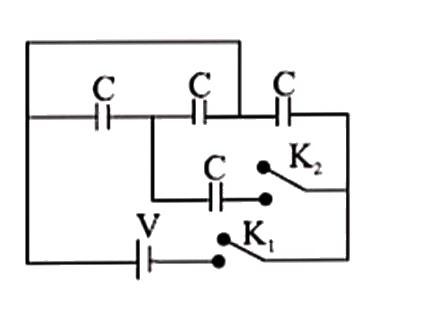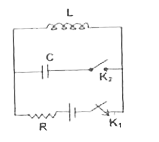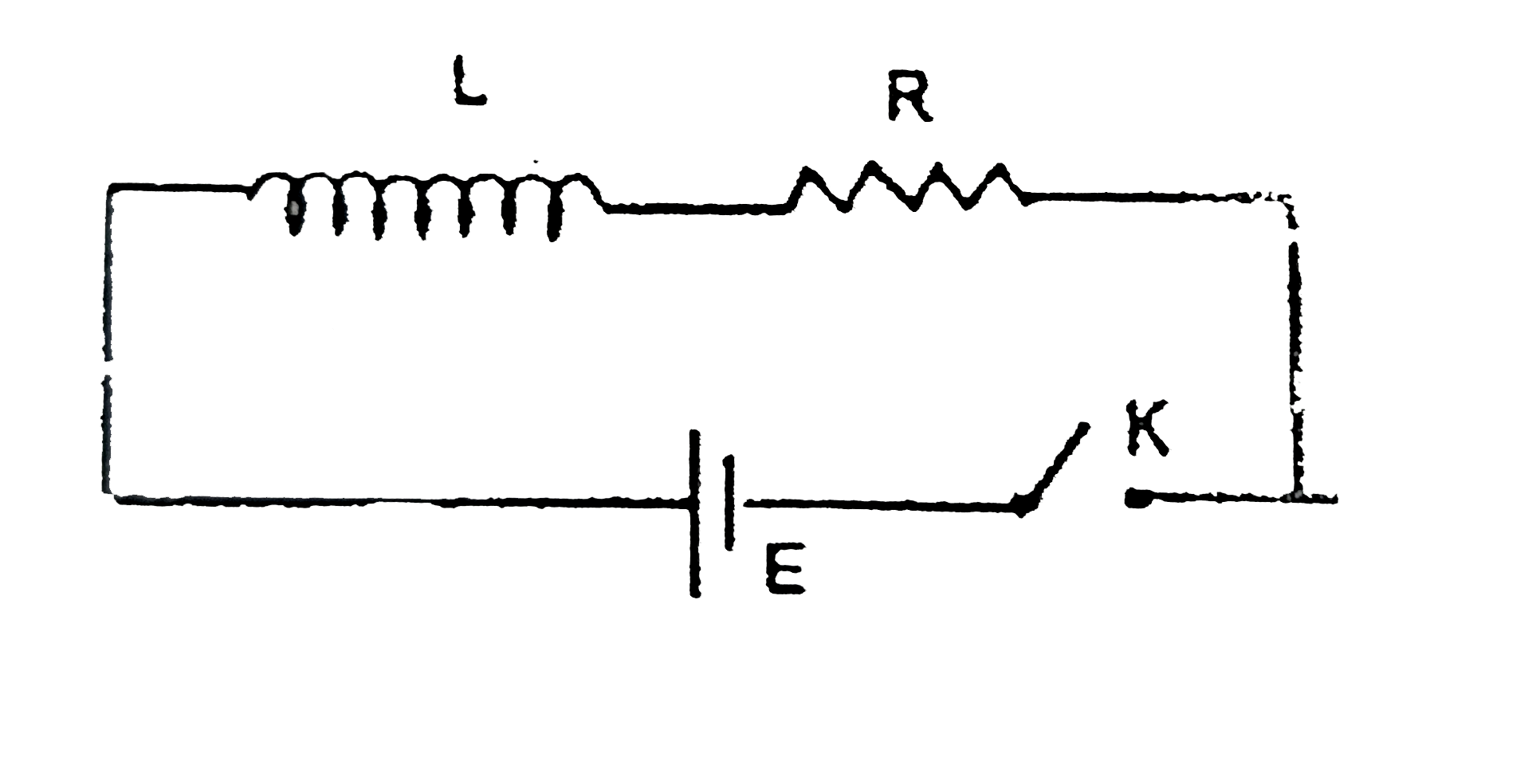In the circuit shown in figure , initially key K1 is closed and key K2 is open. Then K1 is opened and K2 is closed (order is important). [Take Q′1 and Q′2 as charges on C1 and C2 and V1 and V2 as voltage respectively].
![In the circuit shown in figure , initially key K(1) is closed and key K(2) is open. Then K(1) is opened and K(2) is closed (order is important). [Take Q(1)^(') and Q(2)^(') as charges on C(1) and C(2) and V(1) and V(2) as voltage respectively]. Then](https://d10lpgp6xz60nq.cloudfront.net/physics_images/NAR_PHY_V02_XII_C03_E01_152_Q01.png)
Then
charge on C1 gets redistributed such that V1=V2
charge on C1 gets redistributed such that Q′1=Q′2
charge on C1 gets redistributed such that
C1V1+C2V2=C1E
Charge on C1 gets redistributed such that
Q′1+Q′2=Q
The correct Answer is:A, C
Initially, K1 is closed and K2 is open, thus the capacitor C1 gets fully charged. When K1 is opened and K2 is closed, the charged capacitor C1 is connected across an uncharged capacitor C2. When a charged capacitor is connected across an uncharged capacitor, the charged capacitor supplies charge to uncharged capacitor till both the capacitors have common potential difference between their plates. Thus, charge on C1 gets redistributed such that V1=V2.
Charge acquired by C1 is C1E when key K1 is closed. Now K1 is opened and K2 is closed hence this total charge will be redistributed between the two as per specified condition of V1=V2. As per charge conservation, total charge after redistribution must be same as before.
C1V1+C2V2=C1E.
Hence, options (b) and (c ) are correct.
Q in option (d) is not defined, hence we cannot accept this option.
Topper's Solved these Questions
- ELECTROSTATIC POTENTIAL AND CAPACITANCE Book:MODERN PUBLICATIONChapter:ELECTROSTATIC POTENTIAL AND CAPACITANCE Exercise:Chapter Practice Test
Explore 9 Videos
- ELECTROSTATIC POTENTIAL AND CAPACITANCE Book:MODERN PUBLICATIONChapter:ELECTROSTATIC POTENTIAL AND CAPACITANCE Exercise:Competition file (NCERT Exemplar Problems: Multiple Choice Questions Type-I)
Explore 6 Videos
- ELECTROMAGNETIC WAVESBook:MODERN PUBLICATIONChapter:ELECTROMAGNETIC WAVESExercise:CHAPTER PRACTICE TEST
Explore 14 Videos
- MAGNETISM AND MATTERBook:MODERN PUBLICATIONChapter:MAGNETISM AND MATTERExercise:CHAPTER PRACTICE TEST FOR BOARD EXAMINATION
Explore 16 Videos
Similar Questions
In the circuit shown in Figure, initially key K1 is closed and key K2 is open. Then K1 is opened and K2 is closed. Then

View SolutionIn the circuit shown in Fig, instially K1 is closed and K2 is open . What are the charges on each capacitor.
Then K1 was opened and K2 was closed (order is important). What will be the charge on each capacitor now ? [C=1μF]
View Solution
Knowledge Check

A circuit containing two capacitor C1 and C2 shown in figure is in steady state with switch K1 closed and K2 open. At the instant t=0,K1 is opened and K2 is closed. The correct statements are.AAngular frequency of oscillation of LC circuit is 5×104radsecBcharge on capacitor C1 at t=0 is 40μCCMaximum current in iductor is 1ADCharge on capacitor C1 is 10√3μC when energy in the inductor becomes one third of the energy in capacitor.Initially K1 is closed, now if K2 is also closed, find heat dissipated in the resistances of connecting wires
 A12CV2B23CV2C13CV2D14CV2
A12CV2B23CV2C13CV2D14CV2Initially K1 is closed, now if K2 is also closed, find heat dissipated in the resistances of connecting wires
 A12CV2B23CV2C13CV2D14CV2
A12CV2B23CV2C13CV2D14CV2
Shown in the figure is a parallel R , L,C circuit with key K1 closed and K2 opened . When K1 is opened and K2 is closed simultaneously find the maximum potential difference across the capacitor and maximum charge stored in it .

View SolutionConsider the circuit shown in the figure.
(a) Find the current i flowing through the circuit when the keyK1is open and K2 is closed.
(b) Find the net charge on the capacitor when K1 is open & K2 is.closed and also when K1&K2 both are closed.
(c) What is the change in the current'i, when K1 is closed

View SolutionIn the circuit shown in, C1=6μF,C2=3μF, and battery B=20V. The switch S1 is first closed. It is then opened, and S2 is closed. What is the final charge on C2
 .
.
View SolutionA circuit containing capacitors C1andC2 shown in Fig. is in the steady state with key K1 closed. At the instant t = 0, K1 is opened and K2 is closed. The angular frequency of oscillation of the circuit and charge across C1att=125(μ)s are respectively

View SolutionShown in the figure is an R−L circuit. Just after the key (K) is closed

View Solution

